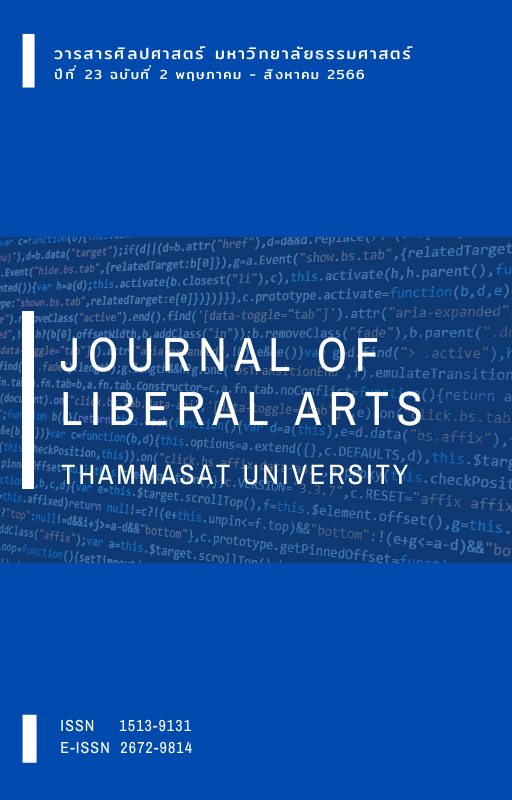ว่าด้วยประวัติศาสตร์สาธารณะ : กำเนิด นิยาม และข้อถกเถียง
Main Article Content
บทคัดย่อ
บทความวิชาการนี้ศึกษากำเนิด และนิยามของประวัติศาสตร์สาธารณะ โดยทบทวนระยะห่างของประวัติศาสตร์สมัยใหม่กับสาธารณชน อันเป็นผลสืบเนื่องมาจากการปฏิรูปประวัติศาสตร์ในสมัยศตวรรษที่ 19 จนเกิดเป็นประวัติศาสตร์สมัยใหม่ที่มีวิธีการแบบวิทยาศาสตร์ และมีความเป็นภววิสัย ทำให้ประวัติศาสตร์เป็นวิชาชีพที่ต้องใช้ทักษะเฉพาะ และมีความเป็นสถาบันมากขึ้น ประวัติศาสตร์สมัยใหม่แบบวิชาการนี้ ศึกษาในหัวข้อเฉพาะที่ลงลึก มีรูปแบบการเขียนเฉพาะ เต็มไปด้วยข้อมูลซับซ้อน เชิงอรรถอ้างอิง สำนวนภาษาที่แห้งแล้ง ทำให้งานประวัติศาสตร์วิชาการเป็นงานเขียนที่ยาก เกิดช่องว่างระหว่างนักประวัติศาสตร์วิชาการกับสาธารณชนคนอ่าน เมื่อประวัติศาสตร์ปรับกระบวนทัศน์ในช่วงทศวรรษ 1960 จากกระแสเรียกร้องเรื่องสิทธิพลเมืองและแนวคิดซ้ายใหม่ ที่ทำให้สนใจประเด็นเรื่องของผู้คนธรรมดามากขึ้น ผนวกกับวิกฤติเศรษฐกิจในช่วงทศวรรษ 1970 ที่กระทบกับวิกฤติการจ้างงานในมหาวิทยาลัย ทำให้นักประวัติศาสตร์ไม่สามารถหาตำแหน่งงานในแวดวงวิชาการได้ จึงได้มีการหาทางออกโดยการฝึกฝนนักประวัติศาสตร์ให้ทำงานนอกวงวิชาการประวัติศาสตร์สาธาณะจึงเกิดขึ้นในฐานะศาสตร์ ที่มีหลักสูตรวารสารและสมาคมวิชาการรองรับ อย่างไรก็ตาม ศาสตร์ประวัติศาสตร์สาธารณะก็มีปัญหาในการนิยาม เนื่องจากกินความถึงการปฏิบัติงานนอกวงวิชาการที่แตกต่างกันของนักประวัติศาสตร์ ทั้งการสื่อสารประวัติศาสตร์กับสาธารณชน การทำงานในหน่วยงานรัฐ การทำงานในหน่วยงานเอกชน ไปจนถึงการมีส่วนร่วมในกิจกรรมประวัติศาสตร์ของมวลชน ฯลฯ นอกจากนี้ ประวัติศาสตร์สาธารณะยังต้องเผชิญกับข้อวิพากษ์ต่าง ๆ ไม่ว่าจะเป็นในเรื่องของสถานะที่ต่ำกว่า การขาดทฤษฎี ตลอดจนการนำประวัติศาสตร์มาใช้ประโยชน์ที่อาจทำให้ประวัติศาสตร์เจือไปด้วยอคติ
Downloads
Article Details

อนุญาตภายใต้เงื่อนไข Creative Commons Attribution-NonCommercial-NoDerivatives 4.0 International License.
เอกสารอ้างอิง
Benson, S., Brier, S., & Rosenzweig, R. (1986). Introduction. In S. Benson, S. Brier, & R. Rosenzweig (Eds.), Presenting the Past. Essays on History and the Public (pp. XV–XXIV). Temple University Press.
Bentley, M. (1999). Modern historiography: An introduction. Routledge.
Bookspan, S. (2006). Something Ventured, Many Things Gained: Reflections on Being a Historian-Entrepreneur. The Public Historian, 28(1), 67-74.
Cauvin, T. (2016). Public history: A textbook of practice. Routledge.
Cauvin, T. (2018). The rise of Public History: an international perspective. Historia Crítica, (68), 3-26.
Champion, J. (2003). Seeing the past: Simon Schama’s “A History of Britain” and Public History. History Workshop Journal, 56, 153-174.
Conrad, M. (2011). A brief survey of Canadian historiography. In P. Clark (Ed.), New possibilities for the past: Shaping history education in Canada (pp. 33-54). University of British Columbia Press.
Demantowsky, M. (2018). What is Public History. In M. Demantowsky (Ed.), Public History and School: International Perspectives (pp. 1-38). De Gruyter Oldenbourg.
Drake, M. (1973). Applied Historical Studies: An Introductory Reader. Methuen, Milton Keynes, Open University Press.
Frisch, M. (1990). A Shared Authority: Essays on the Craft and Maning of Oral and Public History. State of New York University Press.
Gardner, J. B. (2010). Trust, risk and public history: A view from the united states. Public History Review, 17, 52-61.
Gossman, L. (1986). History as decipherment: Romantic historiography and the Discovery of the Other. New Literary History, 18(1), 23-57.
Grele, R. (1981). Whose Public? Whose History? What Is the Goal of a Public Historian? The Public Historian, 3(1), 40-48.
Guillorel, E., & Hopkin, D. (2017). Oral cultures and traditions of social conflict: an introduction to sources and approaches. In E. Guillorel, D. Hopkin, & W. Pooley (Eds.), Rhythms of Revolt European Traditions and Memories of Social Conflict in Oral Culture (1st Edition, pp. 1-42). Routledge.
Historical Research Associates. (n.d.). Featured project. Retrieved August 1, 2022, from https://hrassoc.com/
Johnson, W. G. (1978). Editor’s Preface. The Public Historian, 1(1). 4-10.
Jordanova, L. (2000). History in Practice. Oxford University Press.
Kean, H. (2013). Introduction. In H. Kean & P. Martin (Ed.), The Public History Reader (pp. xiii-xxxii). Routledge.
Kelley, R. (1978). Public history: Its origins, nature, and prospects. The Public Historian, 1(1), 16–28.
Liddington, J. (2002). What Is Public History? Publics and Their Pasts, Meanings and Practices. Oral History, 30(1), 83-93.
National Council on Public History. (n.d.). About the Field. Retrieved August 1, 2022, from https://ncph.org/what-is-public-history/about-the-field/
Novick, P. (1988). That nobel dream: The “Objectivity Question” and the American historical profession. Cambridge University Press.
Purdue, O. (2020). Dealing with difficult pasts: The role of public history in post-conflict Northern Ireland. Studia Hibernica, 46(1), 91-97.
Rearick, C. (1971). Symbol, legend, and history: Michelet as folklorist-historian. French Historical Studies, 7(1), 72-92.
Samuel, R. (1994). Theatres of memory: Past and present in contemporary culture. Verso Books.
The Henry Ford. (n.d.). Henry Ford: Collector. Retrieved August 1, 2022, from https://www.thehenryford.org/history-and-mission/henry-ford-collector/
Tosh, J. (2008). Why history matters. Palgrave Macmillan.
White, H. (1973). Metahistory: The historical imagination in nineteenth-century europe. Johns Hopkins University Press.
Winter, J. (1996). Public History and Historical Scholarship. History Workshop Journal, (42), 169-172.


